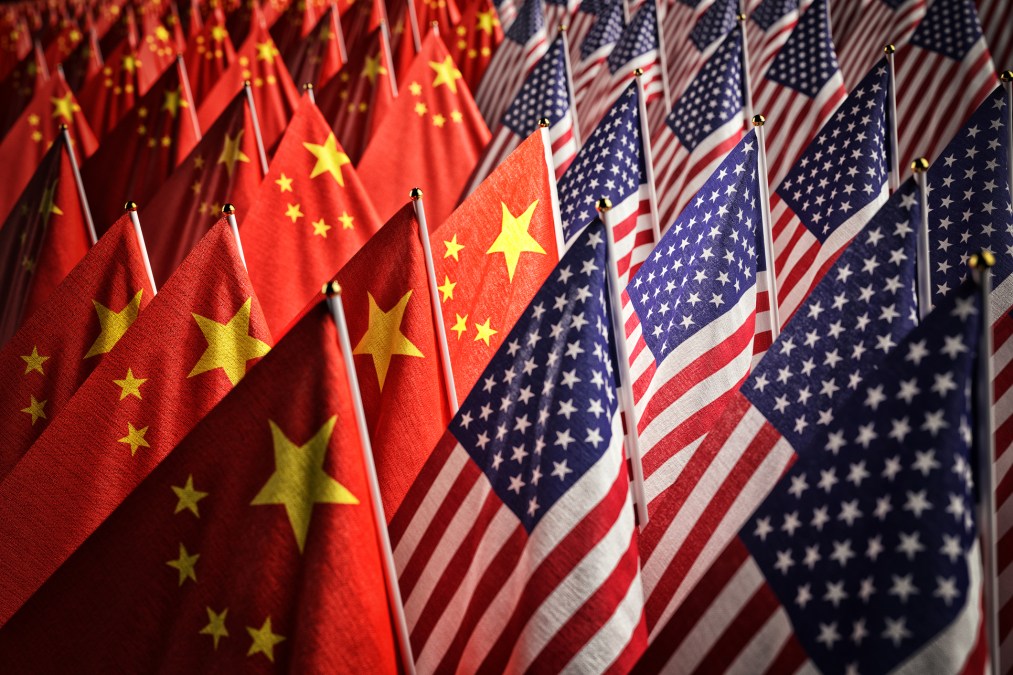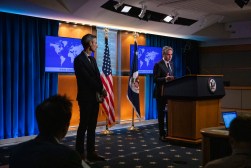Senate intelligence committee discusses science and tech monitoring to outcompete China

The U.S. risks falling behind in its emerging technology race with China because it lacks a comprehensive view of the global science and technology landscape, experts say.
Government needs an independent analytic capability, composed of hundreds of federal and regional data analysts, that monitors S&T developments and flags unwanted technology transfers in real time for policymakers, said Dewey Murdick, director of Georgetown’s Center for Security and Emerging Technology, during a Senate Intelligence Committee hearing Wednesday.
China has such an apparatus of more than 60,000 open-source collectors and analysts prioritizing emerging technology areas worth exploring and preventing it from being surprised by innovations.
“To my knowledge no part of the U.S. government, including the [intelligence community], has developed a scalable countermeasure to this Chinese approach,” Murdick said.
He envisions an entity that coordinates with agencies and receives funding for analysis tasks conducted by employees, half of which are based in the Washington, D.C., area and the rest around national innovation hubs.
The White House’s Critical and Emerging Technologies List and Bureau of Industry and Security’s emerging and foundational technologies list could help focus the analytic capability’s efforts, along with the National Laboratories, said Nazak Nikakhtar, trade lawyer with Wiley Rein LLP.
“I think the National Labs are a completely underutilized crown jewel in American policymaking,” Nikakhtar said. “And I think we really need to leverage them.”
Sen. Mark Warner, D-Va., said the U.S. needs a national strategy safeguarding the U.S. and its allies’ leadership in artificial intelligence, quantum computing, biotechnology and precious metals needed for semiconductors.
The “wakeup call” was when policymakers realized China’s national champion, Huawei, had become the dominant global supplier of communications infrastructure poised to dominate the 5G and O-RAN markets, Warner said.
“This belated realization by American policymakers reflects a complacency with our own innovation and, quite honestly, a little bit of inattention to [the People’s Republic of China’s] objectives and efforts,” Warner said.
Those objectives aren’t secret with China publishing deliberate strategies and plans for creating an unfair, asymmetric trade environment that forces the transfer of technologies to its national champions — at the expense of their foreign competitors, said James Mulvenon, senior China analyst.
The Made in China 2025 policy aims to displace the U.S. standard of living by that year, and China also has a 30- to 50-year systemic plan to supplant the U.S. as a superpower.
“This is one of those intelligence challenges that lends themselves very easily to open-source intelligence,” Mulvenon said.
The strategies and underlying data are publicly available but in Chinese, the country’s “first layer” of cryptography, he added.
Elements of a national strategy to combat China exist, and Secretary of State Antony Blinken was expected to reveal a more comprehensive version last week, before getting sick with COVID-19
“I think that is coming eventually,” Mulvenon said. “The Indo-Pacific framework that was published gives us a lot of clues.”






